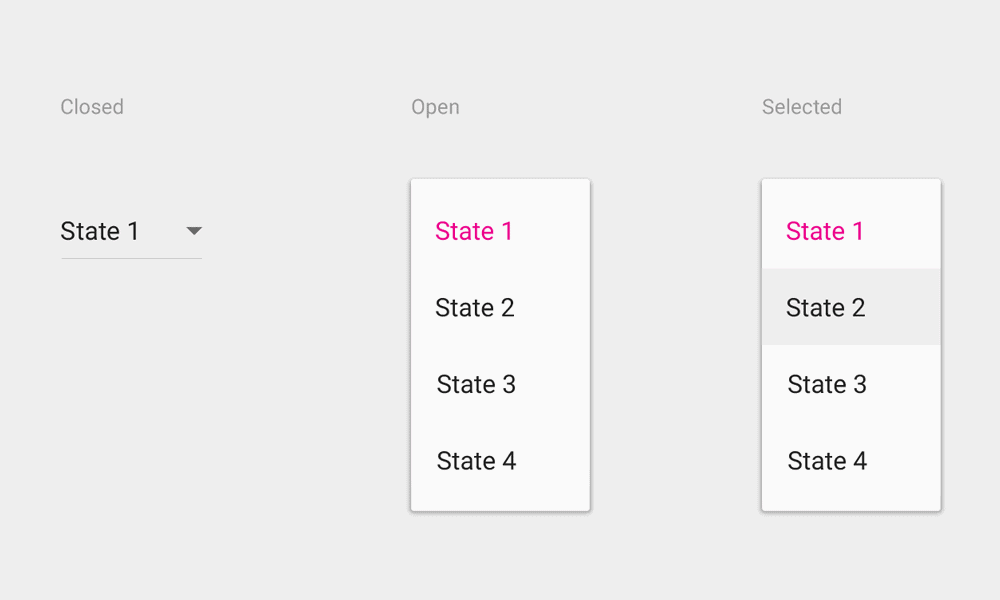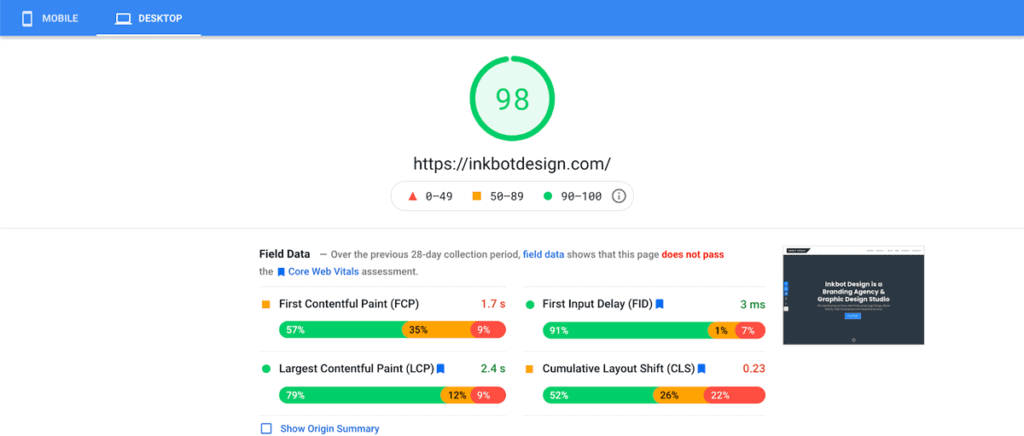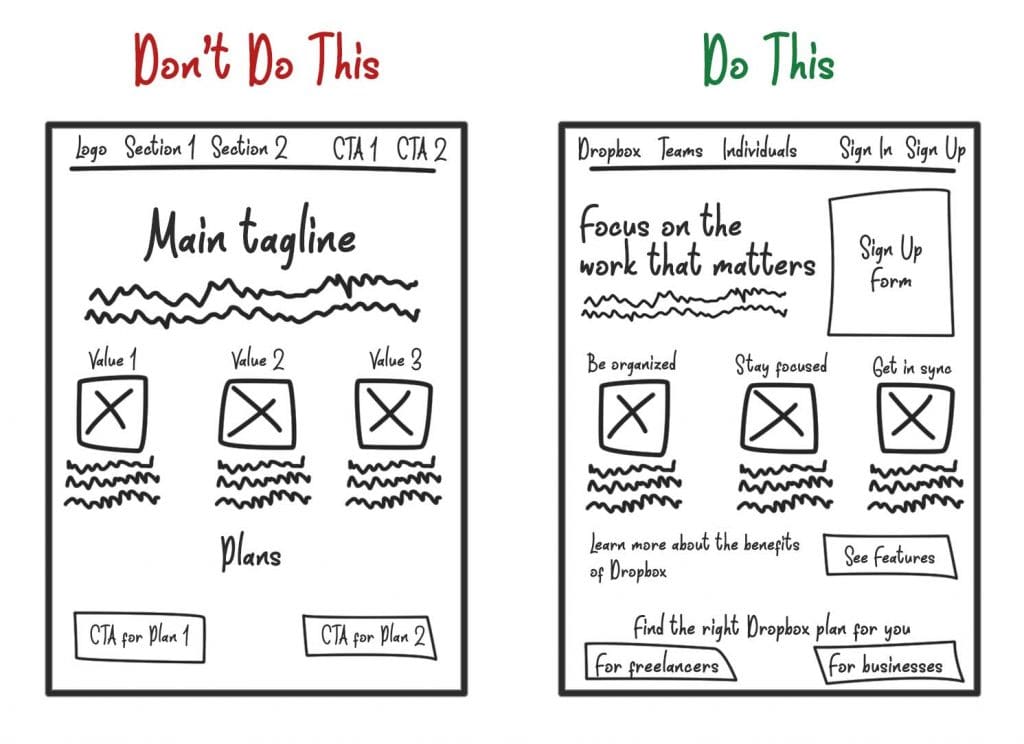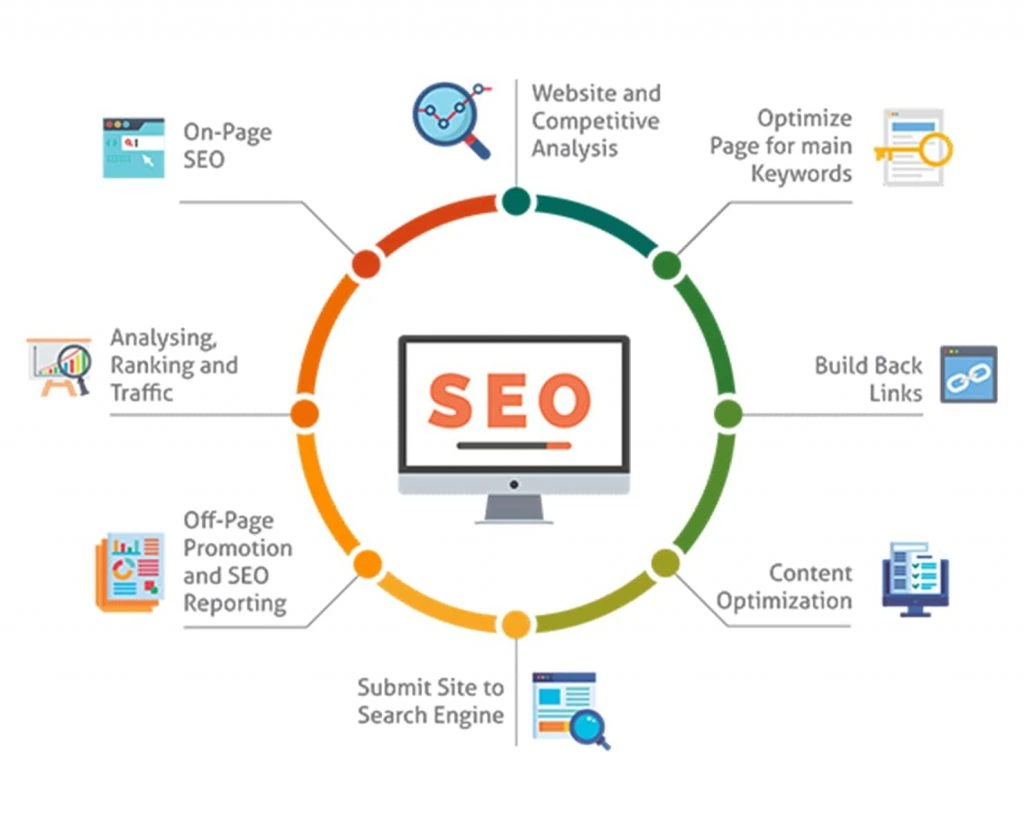Top 10 Principles of Good Web Design
Creating an effective website requires more than technical skills – it requires a thoughtful, user-centred approach to design. In this post, I'll outline ten fundamental principles that form the foundation of good web design. Following these guidelines will help you craft aesthetically pleasing sites that are highly functional and tailored to your target audience's needs.
The principles I'll be covering address visual design, user experience, accessibility, content, and more. Whether you're a seasoned pro or just starting, incorporating these best practices into your process will improve the quality of your work. A beautiful, user-friendly website helps you meet business goals and enhances your brand and reputation.
Read on for actionable tips that will elevate your web design skills. I'll provide real-world examples and each principle to illustrate how leading sites have implemented them. By the end, you'll have a checklist to reference as you plan and execute your next web project. Let's dive in!
Table of Contents
10 Principles of Good Web Design
Principle 1: Clear and Consistent Navigation

Navigation is critical for users to locate what they need. Let's discuss the first rule of good web design: clear and consistent navigation.
- Plan the menu: Utilise a sensible structure to sort menu items. Compile comparable pages together to make it easier for users to explore your site.
- Clear labels: Ensure that labels in your navigation menu fit the page content. Abstain from using unclear or perplexing words that may baffle visitors.
- Same spot: Keep the navigation menu in the same place on all pages. This helps form a mental plan for your site, and users can find their way quickly.
- Active page: Make it obvious which page the user is on by highlighting the corresponding menu item. This gives visual feedback and enhances the user experience.
Also, remember to keep your navigation design straightforward and user-friendly. Refrain from stuffing the menu with unneeded options, confusing people and making navigation difficult.
Pro Tip: Do usability testing to get feedback from real users and spot any navigation issues that need to be fixed. This will help you customise the website's navigation based on user behaviour and preferences.
Principle 2: Mobile-Friendly Design
Making a website mobile-friendly is essential. It guarantees that it looks great and is easy to use on mobile devices. One needs to adjust the layout, font sizes, and images for small screens to do this. Here are the points to remember:
- Responsiveness: Sites should adjust to different screen sizes and orientations.
- Navigation: Menus should be clear and easy to use on mobiles.
- Loading Time: Optimised code and compressed images will load web pages faster.
- Legible font sizes make the user experience better.
- Touchscreen-friendly Buttons: Links and buttons should be big enough for easy tapping.
These design principles enhance the user experience, regardless of the device. Giving priority to mobile-friendly design means that websites can reach more people and boost engagement. By 2026, the number of smartphone users globally is estimated to be 7.5 billion, according to Exploding Topics.
Principle 3: Fast Loading Speed

Fast loading is a must for good web design. This gives users a smooth and efficient experience. Here are 6 points to remember:
- Cut file sizes. Compress photos, optimise code and avoid large media files.
- Use caching—this stores website elements for faster loading on future visits.
- Minimise HTTP requests. Combine several CSS and JavaScript files.
- Enable GZIP compression. This lowers file sizes during server/browser data transfer.
- Avoid redirects. These add loading time and hurt user experience.
- Optimise server response. Ensure your hosting provider or server is fast.
It's also noteworthy that fast loading speeds boost user satisfaction and SEO. Walmart's revenue shot up in 2010 after improving its loading speed by one second. This shows customer engagement and the need to prioritise fast loading in web design.
Principle 4: Effective Use of Colors and Typography
Colours and typography are essential for creating a pleasing and user-friendly website. The best combination of colours and fonts can make a website more engaging.
Let's consider the use of colours and typography in web design. Below is a table to illustrate the key considerations:
| Consideration | Description |
| Colour scheme | Choose colours that reflect the website's brand and content. |
| Contrast | Use contrasting colours for readability and to draw attention. |
| Font selection | Pick fonts that are legible on different devices and screen sizes. Pay attention to font styles and weights. |
| Hierarchy | Make a visual hierarchy through font sizes, colours, and spacing. |
| Accessibility | Make sure the chosen colours meet accessibility standards. |
| Consistency | Keep the colours and typography consistent for a cohesive design. |
Don't use too many different fonts or colours, as this can create a chaotic visual experience.
Fun fact: Research shows that effective colour use can increase brand recognition by up to 80%. (Source: Colour Affects)
Principle 5: User-Friendly Layout

User-Friendly Layout is a must when it comes to web design. Here are six factors to consider:
- Straightforward Navigation: Make sure your website navigation is user-friendly so people can find what they need quickly.
- Consistent Design: Keep the layout, colours, and fonts the same throughout the website to create a unified experience.
- Readability: Choose fonts that are easy to read so everyone can access the content.
- White Space: Utilise space so elements have room to breathe and the page looks balanced.
- Responsiveness: Design the website to look good on all devices.
- Accessibility: Think about accessibility guidelines for people with disabilities.
Optimise load times, place content carefully, and make the design aesthetically pleasing and consistent with your brand identity.
Pro Tip: Test the design with users to get feedback and refine the layout.
Principle 6: High-Quality Visuals
High-quality visuals are essential for creating an impactful website. They boost the user experience and keep the audience engaged. Here are vital aspects to make visuals on your website stand out:
| 1. Image Resolution | Opt for high-resolution images to avoid pixelation and ensure clarity. |
| 2. Proper Formatting | Resize and compress images to improve loading time without sacrificing quality. |
| 3. Relevant Graphics | Choose visuals that align with your website's content, amplifying its message. |
Apart from these, there are other essential factors for effective visual presentation. Colour psychology helps evoke desired emotions. Consistent branding elements create a unified look. Quality visuals build trust and credibility.
To engage users, strategically place visually striking elements like banners or interactive videos. Minimalism also influences web design, focusing on critical visuals rather than overloading the viewer.
Good web design incorporates high-quality visuals to communicate effectively and make a lasting impression. Leverage the potential of visually captivating content to make the most of it!
Principle 7: Engaging and Relevant Content

Engaging and relevant content is essential in good web design. Create content that captures visitors' attention and provides valuable information. Here's a 6-step guide:
- Understand your target audience: Research your target audience's demographics, preferences, and interests. This will help you make content they'll relate to.
- Use compelling headlines: Craft captivating headlines that'll immediately grab readers' attention. A strong headline entices visitors to click and explore.
- Provide helpful and informative content: Make sure your content offers value. Address their pain points, answer questions, and offer solutions. Keep them engaged.
- Use visuals effectively: Incorporate relevant images, videos, or infographics into your content. Visuals make it more engaging and help with understanding.
- Include interactive elements: Engage visitors with interactive features like quizzes, polls, or surveys. It adds an element of fun.
- Update regularly: Keep your content fresh by regularly updating it. Shows commitment to providing current and relevant content.
Suggestions for engaging and relevant content:
- Be concise yet comprehensive: Present info clearly and concisely. Avoid lengthy paragraphs or jargon.
- Incorporate storytelling techniques: Use storytelling techniques to make content more relatable and memorable.
- Use data-backed evidence: Support claims with reliable data or stats. It adds credibility and builds trust.
- Optimise for search engines: Utilise relevant keywords and optimise content for search engines. Attract more organic traffic.
Following these suggestions, you can create content that captures interest, keeps them on your website, and encourages desired actions.
Principle 8: Accessibility and Inclusive Design
Demonstrating the importance of Accessibility and Inclusive Design, let's look at a table with relevant data:
| Attribute | Description |
| Alt Tag | Text alternatives for non-text content |
| Colour Use | Legibility for all readers |
| Keyboard Access | Navigate using only the keyboard |
Alt tags, benefitting visually impaired users, should be used. Also, the contrast between background colours and text should be sufficient for all readers.
Keyboard access is essential for inclusive design. It allows people with physical disabilities or impairments to use the website.
To further improve accessibility and inclusive design:
- Use semantic HTML markup. Clear and meaningful HTML structure helps screen readers interpret page content accurately.
- Provide descriptive link text. Use phrases that give context about the link's destination instead of generic terms like “click here”.
- Test with assistive technology. Test your website with screen readers or voice input systems to identify potential barriers or issues affecting accessibility.
By following these suggestions and implementing the principles of accessibility and inclusive design, websites can create an environment welcoming for all users.
Principle 9: SEO Optimisation

SEO stands for Search Engine Optimisation, which increases the quantity and quality of website traffic by improving visibility in search engine results pages. Effective SEO is crucial for any business with an online presence, as higher rankings lead to more users finding and visiting your website.
The importance of SEO stems from the fact that it boosts a website's visibility and findability. Websites on the first page of Google results get significantly higher click-through rates than later pages, so the goal is to reach that coveted first page. Higher rankings bring in more qualified visitors, leads, and customers.
SEO involves multiple on-page and off-page optimisation techniques. Core elements include:
- Keyword research – Identifying relevant keyword phrases and assessing search volume and competition. This allows you to focus optimisation efforts on high-value keywords.
- On-page optimisation – Optimising page titles, meta descriptions, headings, image alt text, and body content to target priority keywords.
- Mobile-friendly design – Creating a responsive, mobile-optimised website as mobile usage grows globally.
- Loading speed – Reducing page load times through image compression, code minification, browser caching and other website performance optimisations. Faster sites improve user experience.
- Link building – Building quality backlinks from other websites to signal search engines that your site is valuable and authoritative.
- Content creation – Publishing optimised, high-quality content regularly to increase organic search visibility and traffic.
Mastering SEO's technical and creative aspects leads to higher rankings, increased website traffic, lower cost-per-click advertising spending, and a better bottom line. SEO skills are invaluable for anyone in the digital marketing space today.
Pro Tip: To improve SEO optimisation efforts – analyse website analytics regularly. It'll provide insight into the performance of the site.
Principle 10: Regular Updates and Maintenance
Regular updates and maintenance are crucial for a website to run smoothly. They guarantee that the website stays secure, up-to-date, and user-friendly. Not following this can result in outdated content, broken links, and potential security issues.
Here's a 5-step guide to regular updates and maintenance:
- Keep your software up-to-date: This includes the CMS you use, plus any plugins, themes, and other components. Regularly check for updates and install them quickly to get new features and security patches.
- Check and update your content: Take the time to review your website's content for accuracy and relevance. Remove outdated details, update contact information, and ensure all links work correctly.
- Backup your data: Back up your website's data regularly to protect against accidents or security breaches. This ensures you can restore your site if needed without losing info.
- Test your website's usability: Perform regular testing to ensure your website functions across different devices and browsers. Identify any bugs or problems that may come up and fix them quickly.
- Monitor website performance: Monitor your website's performance metrics, such as page load speed, bounce rate, and conversion rates. Fix any elements affecting performance to give a flawless user experience.
In addition to these steps, here are some tips to make updates and maintenance practical:
- Set a schedule: Regularly updating to guarantee consistency in keeping your website up-to-date. This could be weekly, bi-weekly, or monthly, depending on how often changes are needed for your site.
- Automate when you can: Use tools or plugins to automate maintenance tasks such as software updates or backups. This saves time and reduces the risk of human error.
- Ask for user feedback: Encourage users to give feedback on their browsing experience. This can help identify areas for improvement and address any issues that may not be seen immediately.
By following these tips, you make sure your website stays relevant, secure, and user-friendly. Regular updates and maintenance show that you care about providing a quality online experience for your visitors.
Conclusion
Following the core design principles we've covered will help you create websites that check all the boxes: aesthetically pleasing yet highly functional, accessible, optimised for conversions, and tailored to your business goals.
By focusing on simplicity, visual hierarchy, consistency, responsive design, straightforward navigation, quality content, effective CTAs, page speed, mobile-friendliness, and user-centred design, you can craft beautiful online experiences. Sites built on these best practices stand out, engage visitors, and convert them into customers.
As you undertake your next web design project, refer to this list of 10 principles. They will guide you in making intelligent decisions, from initial planning to final execution. You'll be able to create polished, professional websites that represent brands well and provide seamless user journeys.
The web is constantly evolving, but websites built on a solid foundation of design principles, user research, and testing have the flexibility to change with the times. Follow these guidelines for future-proof websites that meet business objectives today and adapt to support goals long into the future.
With diligence and dedication to your craft, you can master these core web design principles. And in doing so, you'll be able to bring your clients' visions to life online and help grow their presence.
Frequently Asked Questions
What are the ten principles of good web design?
The ten principles of good web design are simplicity, visual hierarchy, navigation, loading time, mobile-friendliness, content readability, consistency, responsive design, accessibility, and search engine optimisation.
Why is simplicity an essential principle of good web design?
Simplicity in web design helps users focus on the content and easily navigate through the website. It enhances the user experience by eliminating unnecessary clutter and complexity.
How does visual hierarchy contribute to good web design?
Visual hierarchy organises the elements on a web page in a way that guides users towards the most critical information. It helps users understand the content hierarchy and navigate the website effectively.
Why is mobile-friendliness crucial for good web design?
With the increasing use of mobile devices, a mobile-friendly web design ensures optimal user experience across different screen sizes. It improves accessibility and helps retain and engage mobile users.
What role does accessibility play in good web design?
Accessibility ensures that people with disabilities or impairments can access and navigate a website effectively. It includes considerations such as providing alt-text for images and using proper heading structures for screen readers.
How does search engine optimisation (SEO) relate to good web design?
SEO techniques help improve a website's visibility and ranking on search engine results pages. SEO elements during web design ensure the website is easily discoverable and attracts organic traffic.

This post is gold, thank you!